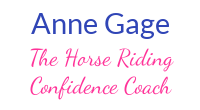I came across a Question & Answer column in a locally produced equine magazine recently. One of the questions was from someone having trouble getting her gelding to trot willingly beside her in the showmanship class. She stated that “I don’t have the strength to pull any harder and when I snap on the lead he tosses his head and stalls out.” I cringed as I read the question picturing how many horses are unfortunately handled this way. I read on interested in what tips the well known trainer would share to resolve this problem.
The trainer suggested that the horse needed to be “inspired” to come forward by “dialing up the level of discomfort and immediately releasing the pressure when he trots”. I cringed again, but read on. The trainer offered some “dos & don’ts” for how to work with the “pressure & release” method for this particular training issue. Another cringe when I read “do apply firm steady pressure under your horse’s jaw which he can immediately relieve by coming forward, similar to being tied to a wall.” (Note: In showmanship classes the chain of the lead shank goes under the horse’s chin.) At this stage, I was starting to really empathize with how the horse was feeling. Uh oh, what’s coming next? “Don’t whip him with your lead shank behind your body. Doing so will only teach him to swing his hip away from you.” Good golly! And, the final suggestion to be used “with an experienced horse who understands completely the cue to go forward” was to have someone casually throw a stone at the horse’s hind end after the handler has asked the horse to go forward. “If my aim is good, I can remain at a distance so that the horse has no idea the stone came from me.” Oh really? These suggestions came from a trainer who says “the goal is for the horse to listen, understand and respond to every signal you send”, and that “your horse answers ‘yes’ to your every question – in harmony”.
So here is my problem with all of this. If the expectation is that the horse responds willingly to every signal we send, then it requires that we are aware of every signal we are sending and that the signal makes sense to the horse. Was the question even being asked in a way the horse could understand?
To ask questions that the horse understands, to have the horse respond willingly to our signals, and to be aware of the signals we are sending requires some knowledge of how horses communicate and interact with each other. Horses are innately very aware of their environment and everything in it. There isn’t much that they miss unless poor handling by humans has caused them to mentally shut down as a coping mechanism. So, unless your horse is shut down, I would bet he knows who threw the stone at his hind end. He is also reading the signals you are sending from your body (hips, shoulders, core) and even your energy (calm, nervous, angry, sad, etc.). You, however, might not be aware of the messages you are sending unless you are always aware of your posture, how you are feeling and every movement you make.
Horses communicate with each other through body language that can be read even from a distance. They earn their place in the herd by who moves who and their level of awareness. They move each other around by pushing – never pulling. Horses know that pulling is what predators do to capture and take down their prey. So, pulling on a horse’s head simply is not a clear signal to any horse to go forward. In fact, it is an aggressive behaviour that causes fearful or defensive behaviours. The Q&A trainer does at least mention that “jerking activates the horse’s flight response – he will react in fear and toss his head upward”.
In the language of the horse herd, the signal to move forward is a push to the flanks. The signal to move the hip over is a push to the middle of the hip. The signal to move the shoulder away is a push to the shoulder. However, the horse that is being pushed will only move away from the pressure if it is sent by a higher ranking horse. Otherwise, he will challenge the pusher by pushing back or, more passively, making an evasive movement such as backing up. These are signals that are clear and make sense to the horse and can easily be applied in horse training.
My response to the original question would be that the first step is to identify why the horse is not willing to go forward with the handler. What is getting in the way? Where is the hole in the training? The handler needs to earn the horse’s respect by giving clear signals that make sense to the horse. Start by asking the horse to go forward from a push to the flank. He will only yield to the push if he sees the pusher (you) as a higher ranking herd member. If he sees you as a push over or a threat, then you have some remedial work to do to change that relationship.
When questions are asked and cues are given in a way that makes sense to the horse, and when the handler has earned the role of trusted, benevolent leader, then the horse can say “yes” and become a willing partner rather than a slave.

